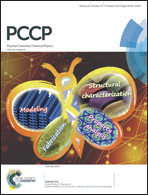Improved amorphous/crystalline silicon interface passivation for heterojunction solar cells by low-temperature chemical vapor deposition and post-annealing treatment
Abstract
In this study, hydrogenated amorphous silicon (a-Si:H) thin films are deposited using a radio-frequency plasma-enhanced chemical vapor deposition (RF-PECVD) system. The Si–H configuration of the a-Si:H/c-Si interface is regulated by optimizing the deposition temperature and post-annealing duration to improve the minority carrier lifetime (τeff) of a commercial Czochralski (Cz) silicon wafer. The mechanism of this improvement involves saturation of the microstructural defects with hydrogen evolved within the a-Si:H films due to the transformation from SiH2 into SiH during the annealing process. The post-annealing temperature is controlled to ∼180 °C so that silicon heterojunction solar cells (SHJ) could be prepared without an additional annealing step. To achieve better performance of the SHJ solar cells, we also optimize the thickness of the a-Si:H passivation layer. Finally, complete SHJ solar cells are fabricated using different temperatures for the a-Si:H film deposition to study the influence of the deposition temperature on the solar cell parameters. For the optimized a-Si:H deposition conditions, an efficiency of 18.41% is achieved on a textured Cz silicon wafer.


 Please wait while we load your content...
Please wait while we load your content...